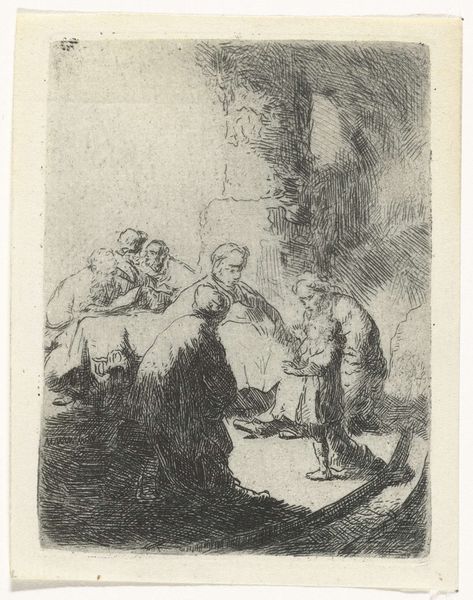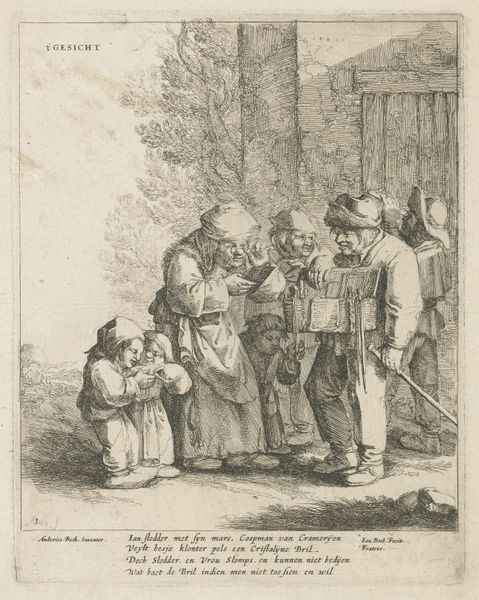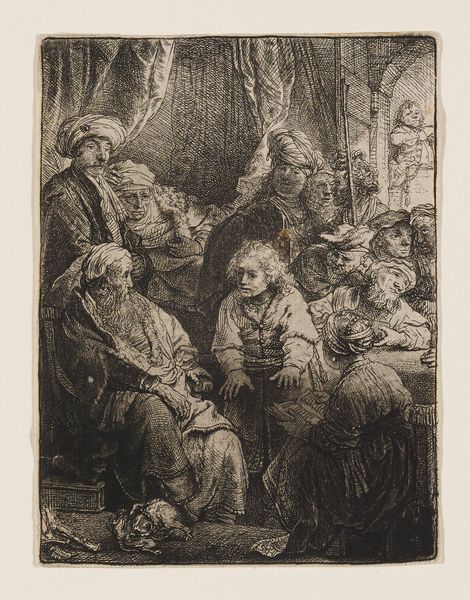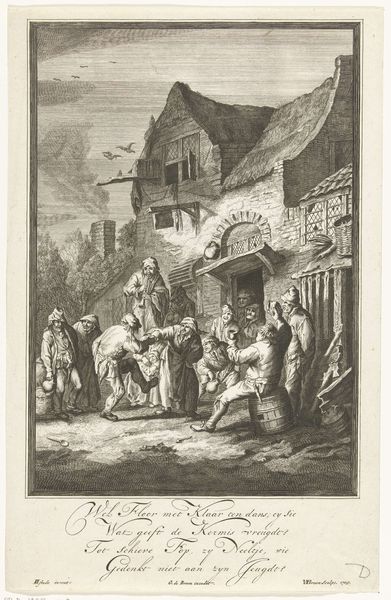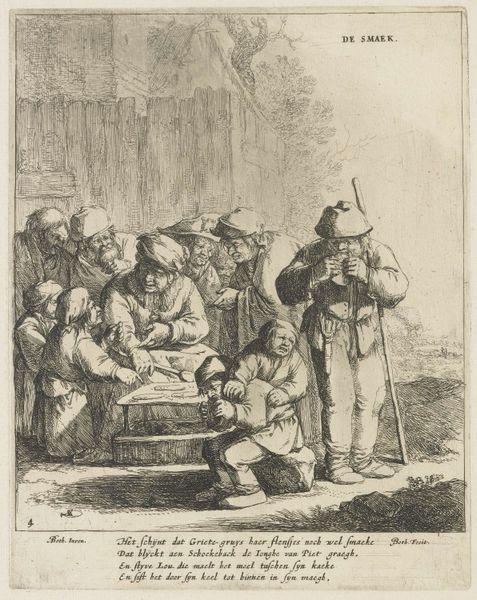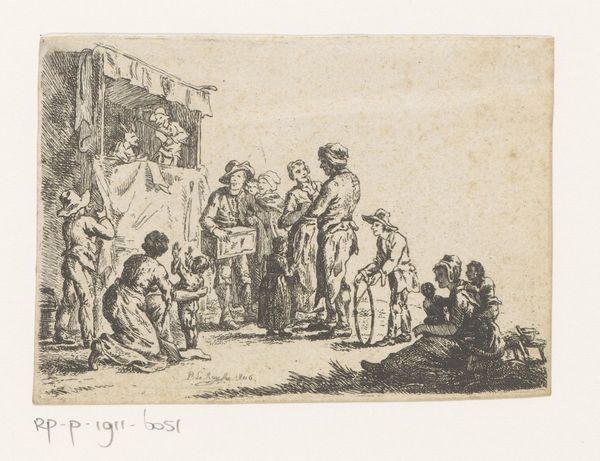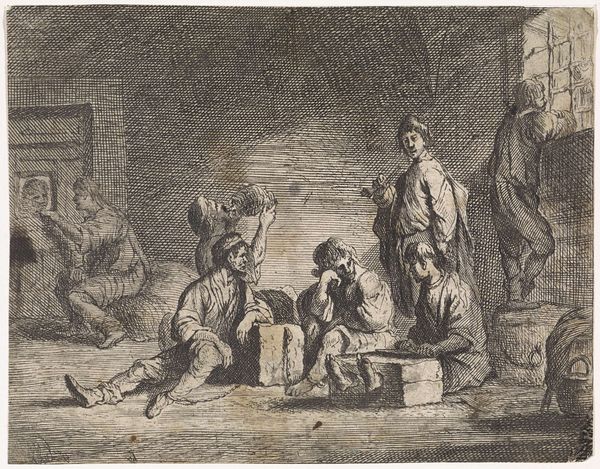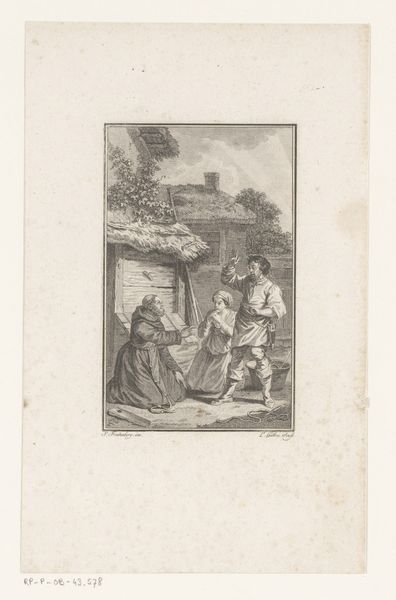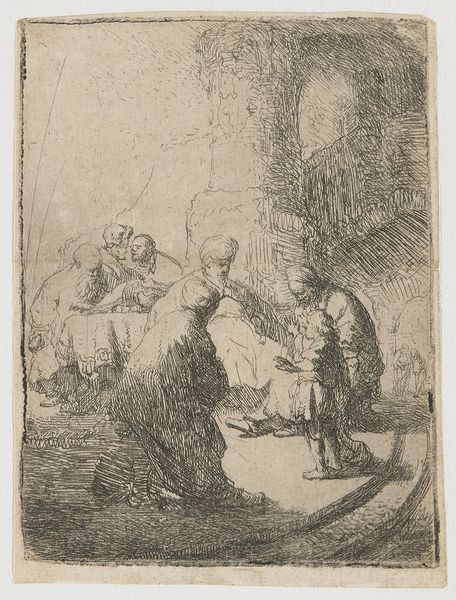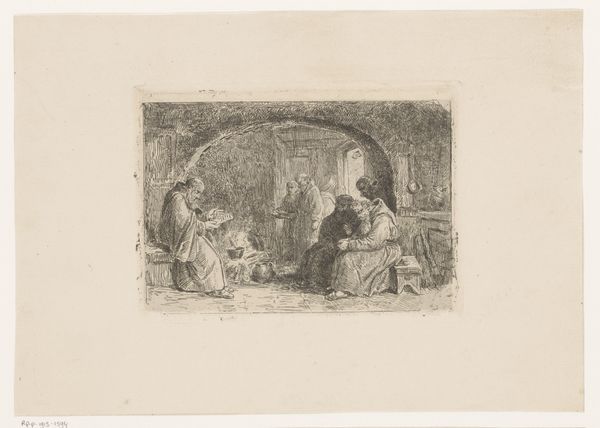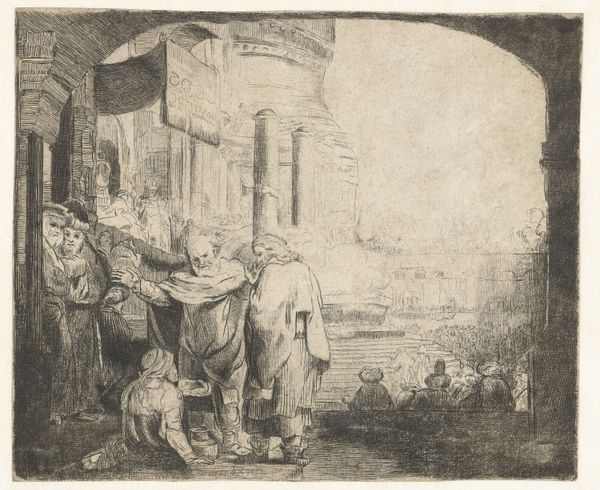
print, etching
#
narrative-art
#
baroque
# print
#
etching
#
old engraving style
#
figuration
#
history-painting
Dimensions: height 104 mm, width 133 mm
Copyright: Rijks Museum: Open Domain
Curator: This etching by Jacob de Wet I, entitled "Judas bij de hoge priesters," or "Judas with the High Priests," was created sometime between 1630 and 1675. The print depicts a key biblical moment. Editor: It's striking. The density of the lines really captures the gloom and unease of the scene. The artist makes striking use of chiaroscuro to amplify the contrast between moral integrity and corruption. The etching seems to glow darkly. Curator: Indeed. Wet employs line to great effect in the creation of mood, doesn’t he? Observe how the convergence of lines directs the viewer’s attention to Judas as he returns the silver, effectively foregrounding the act of betrayal, no? Editor: Precisely. And that betrayal wasn't just a personal failing; it’s indicative of the social stratification inherent to power structures that perpetuate such deceit. We must remember that Judas represents the marginalized, tempted by promises of social elevation and easily exploited by systems of authority. It's a sobering look at historical power imbalances. Curator: Your reading acknowledges its complexity, but focusing on that undermines the intrinsic properties of line, form, and composition that give this work its structure, right? To dwell solely on sociological factors detracts from an appreciation of the balanced structure between the foreground and the figures assembled on the platform. Editor: It also ignores the reality that art like this was frequently commissioned as propaganda during periods rife with ideological conflict! Seeing the artwork as situated within larger economic and power dynamics grants more insight than strictly adhering to purely aesthetic properties. It’s clear that de Wet strategically composes a certain perspective aligned with those structures, intentionally or unintentionally. Curator: Perhaps there is validity in each perspective here. What a print! It possesses layers within layers when contextualized inside an intricate theoretical approach. Editor: The power of these images from the past still resonate in a challenging and important way today. I appreciate its capacity to create meaningful discourse!
Comments
No comments
Be the first to comment and join the conversation on the ultimate creative platform.
